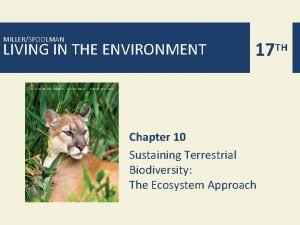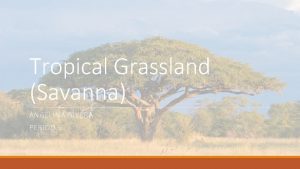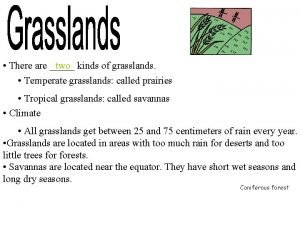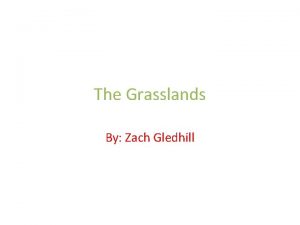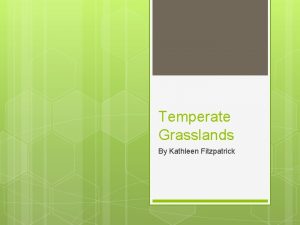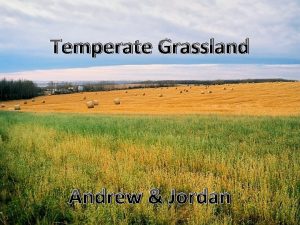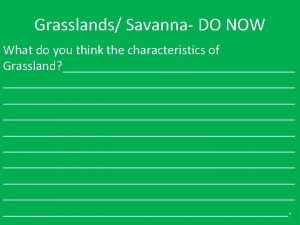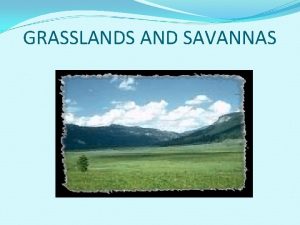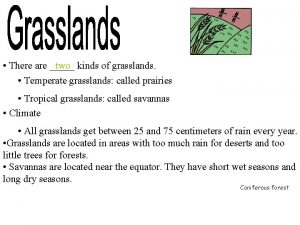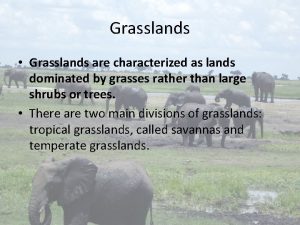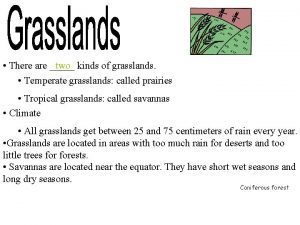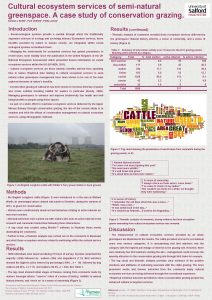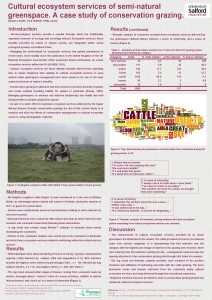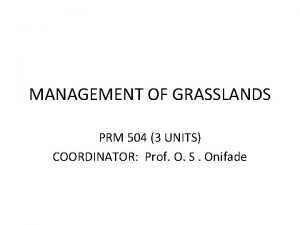Management of seminatural grasslands and future of the













- Slides: 13

Management of seminatural grasslands and future of the CAP Aleksei Lotman

Pastoralism supports biodiversity: seminatural grasslands in Annex 1 of EU habitats directive 6210 Seminatural dry grasslands and scrubland facies on calcareous substrates (Festuco-Brometalia) (*important orchid sites) 6270 *Fennoscandian lowland species-rich dry to mesic grasslands 6280*Nordic alvars and precambrian calcareous flatrocks 6410 Molinia meadows on calcareous, peaty or clayey-silt-laden soils 6430 Hydrophilous tall herb fringe communities 6450 Northern boreal alluvial meadows 6510 Lowland hay meadows 6530 *Fennoscandian wooded meadows 9070 Fennoscandian wooded pastures

Threats Intensification (fertilisation, drainage and other 'improvements') Abandonement/overgrowth Building development Water pollution Long-range air pollution Climate change

Grazing and mowing A century ago: grazing was widespread with shepherds or small children looking after the animals, most of the pastures had no fence, demand for hay was very big resulting in large hay-meadows, including wooded meadows; overgrazing sometimes present Now: pastures fenced and in most intensive farms animals are kept inside whole year; high proportion of silage; low proportion of seminatural grasslands; 'false wilderness'

Species affected by grassland loss Waders: Baltic Dunlin, Avocet, Ruff, Great Snipe, Black-tailed Godwit, Curlew, Lapwing. . . Corncrake Geese Raptors Amphibians (e. g. Natterjack Toad) Orchids Moths

How comes? . . Fires, floods and herbivores created open habitats Humans by managing the above-listed factors and combining them with hay-making and treecutting created the old 'cultural' landscapes Overgrown cultural landscape is not 'natural' There never was a 'golden age', but while planning for the future we have to learn from the past

Why are meadows important? Biodiversity – plants, insects, birds Cultural heritage – they reflect our history Sustainable agriculture – pasturalism and hayharvesting on semi-natural meadows are among ecologically most viable ways to use nature

What to do? Designate sites Management agreements/support schemes Improve technologies Install good fences Introduce hardy beef cattle Combine meadow management with conservation of traditional breeds Pay attention to cultural heritage features Integrate these concerns into sectoral policies, especially agriculture


Example from Matsalu, Estonia Management plan for Matsalu wetland 1993 Tractors and mowers; fences and animals – EU Phare, WWF, Ramsar SGF, EU Life, SIDA, EECONET and other international sources National support with nature conservation funding since 1996 for Matsalu, nationwide since 2001 Support under the new RDP

Management requirements Estonian example Late mowing (in July) No mowing in circles from outside Grazing with appropriate intesity, so that significant part of the pasture is short grass No supplementary feeding No fertilisation, no pesticides Bush cutting and tree felling as appropriate

Lessons to CAP Agricultural policy must ensure possiblities for extensive farming to be viable: relative importance of second pillar, and especially its second axis must increase; more integration of measures under second pillar, and making also first pillar more supportive towards sustainable rural development Nature conservation can act as catalyst for integration of biodiversity and rural development but securing overall functioning of the nature-friendly extensive pastoralism must be responsibility of the agricultural sector

Thank you for listening
 Future perfect simple and continuous
Future perfect simple and continuous Future perfect future continuous future perfect continuous
Future perfect future continuous future perfect continuous Unfenced grasslands in tropical and temperate climates
Unfenced grasslands in tropical and temperate climates Future continuous and future perfect
Future continuous and future perfect Future continuous and future perfect
Future continuous and future perfect Future plans and finished future actions
Future plans and finished future actions Future continuous vs future perfect
Future continuous vs future perfect Kondicional 1 engleski
Kondicional 1 engleski Where are tropical grasslands located
Where are tropical grasslands located Two temperate grasslands
Two temperate grasslands World map of grasslands
World map of grasslands Grassland
Grassland Temperate grassland rainfall
Temperate grassland rainfall Climate graph southern hemisphere
Climate graph southern hemisphere


